|
Books Should Be Free Loyal Books Free Public Domain Audiobooks & eBook Downloads |
|
|
Books Should Be Free Loyal Books Free Public Domain Audiobooks & eBook Downloads |
|
Psychology Books |
|---|
Book type:
Sort by:
View by:
|
By: A Highland Seer | |
|---|---|
 Tea-Cup Reading and Fortune-Telling by Tea Leaves
Tea-Cup Reading and Fortune-Telling by Tea Leaves
Reading the Cup is essentially a domestic form of Fortune-telling to be practiced at home, and with success by anyone who will take the trouble to master the simple rules laid down in these pages: and it is in the hope that it will provide a basis for much innocent and inexpensive amusement and recreation round the tea-table at home, as well as for a more serious study of an interesting subject, that this little guide-book to the science is confidently offered to the public. | |
By: Harry Houdini (1874-1926) | |
|---|---|
 Magician Among the Spirits
Magician Among the Spirits
Houdini, an escape artist and illusionist, became interested later in his life in debunking spiritualists, disbelieving anyone who claimed to have supernatural powers. This was during an era where paranormal phenomena, especially seances, were extremely popular. Although skeptical of their claims, he longed to find a credible source to communicate with family members he had lost. This book chronicles his travels and the many people he spoke with and his observations of their 'powers' and along the way also reveals many of the tricks they employed to deceive their paying customers. - Summary by Phyllis Vincelli | |
By: Orison Swett Marden (1850-1924) | |
|---|---|
 Pushing to the Front
Pushing to the Front
Published in 1894, this is the first book by the renowned inspirational author, Dr. Orison Swett Marden. Pushing to the Front is the product of many years of hard work, and marks a turning point in the life of Dr. Marden. He rewrote it following an accidental fire that brought the five-thousand-plus page manuscript to flames. It went on to become the most popular personal-development book of its time, and is a timeless classic in its genre. Filled with stories of success, triumph and the surmounting of difficulties, it is especially well-targeted at the adolescent or young adult... | |
By: A. (Ada) Goodrich-Freer (1865-1931) | |
|---|---|
 The Alleged Haunting of B—— House Including a Journal Kept During the Tenancy of Colonel Lemesurier Taylor
The Alleged Haunting of B—— House Including a Journal Kept During the Tenancy of Colonel Lemesurier Taylor
| |
By: A. (Alphonse) Loisette | |
|---|---|
 Assimilative Memory or, How to Attend and Never Forget
Assimilative Memory or, How to Attend and Never Forget
| |
By: A. Alpheus | |
|---|---|
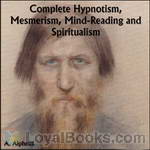 Complete Hypnotism, Mesmerism, Mind-Reading and Spiritualism
Complete Hypnotism, Mesmerism, Mind-Reading and Spiritualism
Written in 1903, just sixty years after the word ‘hypnotism’ was coined, this book explores the contemporary understanding of the nature, uses and dangers of the technique. Hypnotism has been practiced for many centuries, but it was in the mid-to-late nineteenth century that it became a particularly fashionable way to explore the human mind. Although understanding of the subject has evolved considerably over subsequent years, this book remains a fascinating insight into a technique once thought to be at the forefront of medical science. | |
By: Abraham Myerson (1881-1948) | |
|---|---|
 The Foundations of Personality
The Foundations of Personality
| |
By: Alan Edward Nourse (1928-1992) | |
|---|---|
 Second Sight
Second Sight
| |
By: Alexander Roberts (-1620) | |
|---|---|
 A Treatise of Witchcraft
A Treatise of Witchcraft
| |
By: Alexander Sutherland Neill (1883-1973) | |
|---|---|
 A Dominie in Doubt
A Dominie in Doubt
| |
By: Alfred Binet (1857-1911) | |
|---|---|
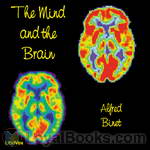 The Mind and the Brain
The Mind and the Brain
Today, almost every layperson understands the concept of intelligence tests and can glibly discuss IQ scores. In fact, these have become so common in the popular imagination that magazines, websites and pop quizzes offer to assess your intelligence at the drop of a hat! In this scenario, it's interesting to recall the very first person who proposed the concept of measurable intelligence. Alfred Binet was basically a clinical psychologist whose wide-ranging interests in learning difficulties faced by school children prompted him to undertake extensive studies in human cognition, psychology, learning and behavior... | |
By: Alfred Korzybski (1879-1950) | |
|---|---|
 Manhood of Humanity.
Manhood of Humanity.
| |
By: Annie Wood Besant (1847-1933) | |
|---|---|
 Occult Chemistry Clairvoyant Observations on the Chemical Elements
Occult Chemistry Clairvoyant Observations on the Chemical Elements
| |
By: Anonymous | |
|---|---|
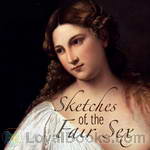 Sketches Of The Fair Sex
Sketches Of The Fair Sex
Sketches of the fair sex, in all parts of the world. To which are added rules for determining the precise figure, the degree of beauty, the habits, and the age of women, notwithstanding the aids and disguise of dress. It is our design to present a pleasing and interesting miscellany, which will serve to beguile the leisure hour, and will at the same time couple instruction with amusement. We have used but little method in the arrangement: Choosing rather to furnish the reader with a rich profusion... | |
By: Arnold Bennett (1867-1931) | |
|---|---|
 Mental Efficiency and Other Hints to Men and Women
Mental Efficiency and Other Hints to Men and Women
Mental Efficiency and Other Hints to Men and Women is one of the many self help books that Bennett wrote, the most famous of these being How to Live 24 Hours a Day. It is highly readable, amusing and offers wisdom in an extremely palatable form. Bennett's gift for analysis and his knowledge of philosophy and psychology make this book a valuable treasure trove of handy hints to improve our lives. Though it was first published in 1911, it remains as relevant, wise and useful as it did more than a hundred years ago... | |
 The Human Machine
The Human Machine
Bennett asks us to consider our brains as the most wonderful machine, a machine which is the only thing in this world that we can control. As he writes: "I am simply bent on calling your attention to a fact which has perhaps wholly or partially escaped you -- namely, that you are the most fascinating bit of machinery that ever was."As ever, his prose is honeyed, his thoughts inspired, and his advice as relevant today as when it was written. (Introduction by Ruth Golding) | |
By: Arthur Edward Waite (1857-1942) | |
|---|---|
 Devil-Worship in France or The Question of Lucifer
Devil-Worship in France or The Question of Lucifer
| |
By: Augustin Calmet (1672-1757) | |
|---|---|
 The Phantom World or, The philosophy of spirits and apparitions
The Phantom World or, The philosophy of spirits and apparitions
| |
By: Ayn Rand (1905-1982) | |
|---|---|
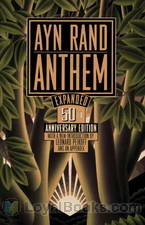 Anthem
Anthem
The title 'Anthem' is derived as an anthem to sense of self and self-governing thoughts. Anthem is a story of Equality 7-2521 who is a young man living in some unspecified future time and place. In this future era freedom and individual rights have been eradicated. The starring character of the novel is an inquisitive street cleaner. He lives in a society where people have lost their knowledge of individualism, to the extreme that people do not know words like 'I' or 'mine'. All the people live and work for their livelihood in collective groups, along with the people with power, namely the 'Councils'... | |
By: Barbara Constant | |
|---|---|
 The Sound of Silence
The Sound of Silence
| |
By: Baron Paul Henri Thiry d'Holbach (1723-1789) | |
|---|---|
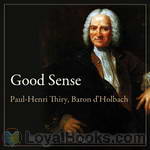 Good Sense
Good Sense
In 1770, Baron D'Holbach published his masterpiece, "Systeme de la Nature", which for a long time passed as the posthumous work of M. de Mirabaud. That text-book of "Atheistical Philosophy" caused a great sensation, and two years later, 1772, the Baron published this excellent abridgment of it, freed from arbitrary ideas; and by its clearness of expression, facility, and precision of style, rendered it most suitable for the average student. This text is based on an undated English translation of "Le Bon Sens" published c. 1900. The name of the translator was not stated. | |
By: Belle M. Wagner | |
|---|---|
 Within the Temple of Isis
Within the Temple of Isis
| |
By: Bernard Glueck (1883-) | |
|---|---|
 Studies in Forensic Psychiatry
Studies in Forensic Psychiatry
| |
By: Bertrand Russell (1872-1970) | |
|---|---|
 Analysis of Mind
Analysis of Mind
A neat work on philosophy of mind by the 20th century analytic philosopher Bertrand Russell. | |
By: Booker T. Washington (1856-1915) | |
|---|---|
 Putting the Most Into Life
Putting the Most Into Life
The chapters in this little book were originally part of a series of Sunday Evening Talks given by the Principal to the students of the Tuskegee Normal and Industrial Institute. They have been recast from the second to the third person, and many local allusions have been cut out. They are now sent out, in response to repeated requests, to a larger audience than that to which they were first spoken. - Summary by Booker T. Washington | |
By: Carl Gustav Jung (1875-1961) | |
|---|---|
 Collected Papers on Analytical Psychology
Collected Papers on Analytical Psychology
A collection of classical writings of Swiss psychologist Carl G. Jung, an influential thinker and the founder of analytical psychology. Written at intervals over a span of fourteen years, these selected articles and pamphlets contain many fascinating ideas that have become widely accepted psychological concepts nowadays, but had just started to develop at the time when the book was written. For instance, this is where Dr. Jung's ideas of introversion and extroversion, a contribution of vital importance to psychology, appeared for the very first time. Other topics explored include the concept of the unconscious, the study of psychological types, and the psychology of dreams. | |
By: Cesare Lombroso (1835-1909) | |
|---|---|
 Man of Genius
Man of Genius
Famous criminologist, anthropologist, and psychiatrist, Dr Lombroso, investigated the memetic anecdotal belief that genius is associated with degenerative symptoms, or may even be a version of insanity, and presented his findings as a fascinating and controversial theory that the creative and imaginative celebrities throughout history have also displayed what he termed as "atavistic" symptoms, or defects resembling what is commonly seen in the unwell. Citations of evidence are drawn from a rich variety... | |
By: Charles A. (Charles Abram) Ellwood (1873-1946) | |
|---|---|
 Sociology and Modern Social Problems
Sociology and Modern Social Problems
| |
By: Charles B. Towns (1862-1947) | |
|---|---|
 Habits that Handicap
Habits that Handicap
Habits that Handicap is one of three novels about alcholoism and drug addiction written by Charles B. Towns. Towns was an expert on alcoholism and drug addiction who helped draft drug control legislation in the United States during the early 20th century. He also founded the Towns Hospital in New York City, which aimed at drying out the well-to-do patient. | |
By: Charles Godfrey Leland (1824-1903) (1824-1903) | |
|---|---|
 The Mystic Will
The Mystic Will
This book presents a method of developing and strengthening the faculties of the mind, through the awakened will, by a simple, scientific process possible to any person of ordinary intelligence | |
By: Charles Mackay (1814-1889) | |
|---|---|
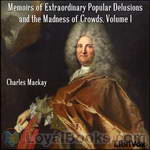 Memoirs of Extraordinary Popular Delusions and the Madness of Crowds
Memoirs of Extraordinary Popular Delusions and the Madness of Crowds
The book chronicles and vilifies its targets in three parts: “National Delusions”, “Peculiar Follies”, and “Philosophical Delusions”.The subjects of Mackay’s debunking include alchemy, beards (influence of politics and religion on), witch-hunts, crusades and duels. Present day writers on economics, such as Andrew Tobias, laud the three chapters on economic bubbles. | |
 Memoirs of Extraordinary Popular Delusions
Memoirs of Extraordinary Popular Delusions
| |
By: Charles Waddell Chesnutt (1858-1932) | |
|---|---|
 Colonel's Dream
Colonel's Dream
In this novel, Chesnutt described the hopelessness of Reconstruction in a post-Civil War South that was bent on reestablishing the former status quo and rebuilding itself as a region of the United States where new forms of "slavery" would replace the old. This novel illustrated how race hatred and the impotence of a reluctant Federal Government trumped the rule of law, ultimately setting the stage for the rise of institutions such as Jim Crow, lynching, chain gangs and work farms--all established with the intent of disenfranchising African Americans. | |
By: Charlotte Perkins Gilman (1860-1935) | |
|---|---|
 The Yellow Wallpaper
The Yellow Wallpaper
| |
By: Clara | |
|---|---|
 Cupology How to Be Entertaining
Cupology How to Be Entertaining
| |
By: Clarence Darrow (1857-1938) | |
|---|---|
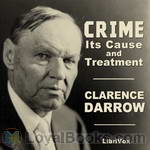 Crime: Its Cause and Treatment
Crime: Its Cause and Treatment
Clarence Darrow was an American lawyer. He remains notable for his wit and agnosticism, which marked him as one of the most famous American lawyers and civil libertarians.In this book, Darrow expands on his lifelong contention that psychological, physical, and environmental influences—not a conscious choice between right and wrong—control human behavior. To my ears (the reader's), the author has a rather simplistic behaviourist view of human behaviour, but he argues his position with wonderful clarity... | |
By: Claude Fayette Bragdon (1866-1946) | |
|---|---|
 Four-Dimensional Vistas
Four-Dimensional Vistas
| |
By: Cordwainer Smith (1913-1966) | |
|---|---|
 Psychological Warfare
Psychological Warfare
Psychological warfare and propaganda have been used extensively in warfare since the earliest times. This book explores the functions, limitations, types, and history of psychological warfare through 1953. It was written by Paul Myron Anthony Linebarger, a US Army officer, a noted East Asia scholar, and an expert in psychological warfare, also known by the pseudonym Cordwainer Smith as a science fiction author. Linebarger had extensive experience with the practice and implementation of psychological warfare techniques in the field through his work with the Office of War Information, the Operation Planning and Intelligence Board, and the CIA... | |
By: D. H. Lawrence (1885-1930) | |
|---|---|
 Fantasia of the Unconscious
Fantasia of the Unconscious
| |
By: Delmer Eugene Croft | |
|---|---|
 Supreme Personality
Supreme Personality
Life is self-realization. Every birth is divine. We are born anew every morning. My wish is that you may catch the gleam, be freed from limitations and enter upon your boundless possibilities. To bring you into the throne-room of your being, that you may awaken in self-realization, is why I have prepared this course of lessons. Should you give five minutes a day to them, in a year you will know the joy there is in Life, in Power, and in Service. (from the text) | |
By: E. Katherine (Emily Katherine) Bates | |
|---|---|
 Seen and Unseen
Seen and Unseen
| |
By: E. W. (Ernest Watson) Burgess (1886-1966) | |
|---|---|
 Introduction to the Science of Sociology
Introduction to the Science of Sociology
| |
By: Edgar Thurston (1855-1935) | |
|---|---|
 Omens and Superstitions of Southern India
Omens and Superstitions of Southern India
This book deals mainly with some aspects of what may be termed the psychical life of the inhabitants of the Madras Presidency, and the Native States of Travancore and Cochin. | |
By: Edith Wharton (1862-1937) | |
|---|---|
 The Touchstone
The Touchstone
Stephen Glennard's career is falling apart and he desperately needs money so that he may marry his beautiful fiancee. He happens upon an advertisement in a London magazine promising the prospect of financial gain. Glennard was once pursued by Margaret Aubyn, a famous and recently deceased author, and he still has her passionate love letters to him. Glennard removes his name from the letters and sells them, making him a fortune and building a marriage based on the betrayal of another. | |
By: Edward Prime-Stevenson (1868-1942) | |
|---|---|
 The Square of Sevens An Authoritative Method of Cartomancy with a Prefatory Note
The Square of Sevens An Authoritative Method of Cartomancy with a Prefatory Note
| |
By: Edward Summers Squier | |
|---|---|
 Etiquette Made Easy
Etiquette Made Easy
"A complete dictionary [sic] containing the right information for any and all occasions." - Summary by KevinS | |
By: Elliott O'Donnell (1872-1965) | |
|---|---|
 Byways of Ghost-Land
Byways of Ghost-Land
| |
 Some Haunted Houses of England and Wales
Some Haunted Houses of England and Wales
Old buildings necessarily have a history. It is not always a happy history and folklore abounds. Sometimes unhappy souls come back to haunt the current residents or their guests. Whether you believe in ghosts or not, these narratives provide a fascinating insight into the history of the buildings and the hysteria they may induce. - Summary by Lynne Thompson | |
By: Elliott O’Donnell (1872—1965) | |
|---|---|
 Animal Ghosts
Animal Ghosts
Summary: This is a collection of ghost stories in which the antagonists are various animals. Divided up into chapters of ghost sightings by each group of animals, you will hear of hauntings by dogs, cats, birds, jungle animals, etc. (Summary by Allyson Hester) | |
By: Elsie Lincoln Benedict | |
|---|---|
 How to Analyze People on Sight Through the Science of Human Analysis: The Five Human Types
How to Analyze People on Sight Through the Science of Human Analysis: The Five Human Types
In this popular American book from the 1920s, accomplished public speaker and self-help charlatan Elsie Lincoln Benedict outlines her pseudo-scientific system of "Human Analysis". She proposes that, within the human race, five sub-types have developed through evolutionary processes, each with its own distinct character traits and corresponding outward appearance. She offers to teach the reader how to recognise these five types of people and understand their innate differences. Her ideas have never been taken seriously by the scientific community, but this book is considered a classic within its genre and remains in print today. Summary by Carl Manchester. | |
By: Emory Adams Allen (1853-1933) | |
|---|---|
 Golden Gems of Life
Golden Gems of Life
Life is full of ups and downs, joys and trials. In this work, we are advised on how to deal with what fate deals us, the good and bad, the common and uncommon. Home, childhood, success and failure, perseverance, dignity, frugality, envy, charity... all these and more are explored in this 'guide to life'. - Summary by Lynne Thompson | |
By: Eros Urides | |
|---|---|
 The Planet Mars and Its Inhabitants, a psychic revelation
The Planet Mars and Its Inhabitants, a psychic revelation
| |
By: Eugen Sandow (1867-1925) | |
|---|---|
 Strength and How to Obtain It
Strength and How to Obtain It
In writing this book I have taken it as a commonplace that everyone—man, woman, and child—wants to be strong. Without strength—and by strength I mean health, vitality, and a general sense of physical well-being—life is but a gloomy business. Wealth, talent, ambition, the love and affection of friends, the pleasure derived from doing good to those about one, all these things may afford some consolation for being deprived of life’s chief blessing, but they can never make up for it. “But,”... | |
By: Floyd L. Wallace (1915-2004) | |
|---|---|
 Forget Me Nearly
Forget Me Nearly
| |
By: Frank C. (Frank Channing) Haddock (1853-1915) | |
|---|---|
 Mastery of Self for Wealth Power Success
Mastery of Self for Wealth Power Success
| |
By: Frank W. (Frank Wilson) Blackmar (1854-1931) | |
|---|---|
 History of Human Society
History of Human Society
| |
By: Fyodor Dostoyevsky (1821-1881) | |
|---|---|
 The Brothers Karamazov
The Brothers Karamazov
Set in 19th century Russia, The Brothers Karamazov (Russian: Братья Карамазовы) is the last novel written by the illustrious author Fyodor Dostoyevsky who died a few months before the book's publication. The deeply philosophical and passionate novel tells the story of Fyodor Karamazov, an immoral debauch whose sole aim in life is the acquisition of wealth. Twice married, he has three sons whose welfare and upbringing, he cares nothing about. At the beginning of the story, Dimitri Karamazov, the eldest son who is now a twenty-eight year old war veteran, returns to his home town to claim the inheritance left to him by his dead mother... | |
By: George Berkeley (1685-1753) | |
|---|---|
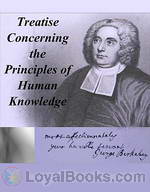 A Treatise Concerning the Principles of Human Knowledge
A Treatise Concerning the Principles of Human Knowledge
A Treatise Concerning the Principles of Human Knowledge, Part 1 (Commonly called “Treatise” when referring to Berkeley’s works) is a 1710 work by the Irish Empiricist philosopher George Berkeley. It largely seeks to refute the claims made by his contemporary John Locke about the nature of human perception. Both Locke and Berkeley agreed that there was an outside world, and it was this world which caused the ideas one has within one’s mind. Berkeley sought to prove that the outside world was also composed solely of ideas, suggesting that “Ideas can only resemble Ideas”... | |
By: George Combe (1788-1858) | |
|---|---|
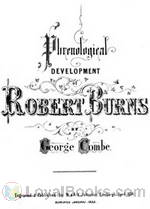 Phrenological Development of Robert Burns From a Cast of His Skull Moulded at Dumfries, the 31st Day of March 1834
Phrenological Development of Robert Burns From a Cast of His Skull Moulded at Dumfries, the 31st Day of March 1834
| |
By: George O. Smith (1911-1981) | |
|---|---|
 The Big Fix
The Big Fix
| |
By: George W. (Washington) Crile (1864-1943) | |
|---|---|
 Origin and Nature of Emotions
Origin and Nature of Emotions
| |
By: Gustave Le Bon (1841-1931) | |
|---|---|
 Crowd
Crowd
"Civilisations as yet have only been created and directed by a small intellectual aristocracy, never by crowds. Crowds are only powerful for destruction. Their rule is always tantamount to a barbarian phase. A civilisation involves fixed rules, discipline, a passing from the instinctive to the rational state, forethought for the future, an elevated degree of culture — all of them conditions that crowds, left to themselves, have invariably shown themselves incapable of realising. In consequence of the purely destructive nature of their power crowds act like those microbes which hasten the dissolution of enfeebled or dead bodies... | |
 The Psychology of Revolution
The Psychology of Revolution
| |
By: Gustavus Hindman Miller (1857-1929) | |
|---|---|
 Ten Thousand Dreams Interpreted, or what's in a dream: a scientific and practical exposition
Ten Thousand Dreams Interpreted, or what's in a dream: a scientific and practical exposition
| |
By: H. G. Wells (1866-1946) | |
|---|---|
 Anticipations
Anticipations
Wells considered this book one of his most important, a natural follow-up to such works as his Man of the Year Million and The Time Machine. His goal was to get people to think and act in new ways. The book starts with a look at how humans get along socially and how they carry out their business ventures. It then discusses how these elements influence others, such as politics, the world of work, and education. H. G. tried to make clear how the current social order was disintegrating without preparing another to take its place. He then traced the roots of democracy, which in its present state he saw as unworkable. Instead, he proposed a new republic. He also critiqued modern warfare. | |
By: Hamlin Garland (1860-1940) | |
|---|---|
 The Shadow World
The Shadow World
| |
By: Hans Gustav Adolf Gross (1847-1915) | |
|---|---|
 Criminal Psychology; a manual for judges, practitioners, and students
Criminal Psychology; a manual for judges, practitioners, and students
| |
By: Havelock Ellis (1859-1939) | |
|---|---|
 Studies in the Psychology of Sex, Volume One
Studies in the Psychology of Sex, Volume One
The first of six volumes, this volume covers in extensive detail the topics of "The Evolution of Modesty", "The Phenomena of Sexual Periodicity", and "Auto-Eroticism". Written as an anthropological and psychological study from the point of view of Havelock, the famous British sexologist of the late 19th century, who was also a physician and social reformer. | |
By: Helen Ekin Starrett (1840-1920) | |
|---|---|
 Letters to a Daughter and A Little Sermon to School Girls
Letters to a Daughter and A Little Sermon to School Girls
Helen Ekin Starrett, journalist, mother of two daughters, grandmother of seven granddaughters and teacher to many young girls at the Starrett School for Girls offers lessons in life and religion to girls about to "pass out from the guardianship of home into life with its duties and trials". | |
By: Henri Bergson (1859-1941) | |
|---|---|
 Dreams
Dreams
| |
By: Henry Drummond | |
|---|---|
 The Greatest Thing in the World and Other Addresses
The Greatest Thing in the World and Other Addresses
The spiritual classic The Greatest Thing In the World is a trenchant and tender analysis of Christian love as set forth in the thirteenth chapter of I Corinthians. The other addresses speak to other aspects of Christian life and thought. | |
By: Henry Fielding (1707-1754) | |
|---|---|
 The History of Tom Jones, A Foundling
The History of Tom Jones, A Foundling
Tom Jones is considered one of the first prose works describable as a novel. The novel is divided into 18 smaller books. Tom Jones is a foundling discovered on the property of a very kind, wealthy landowner, Squire Allworthy. Tom grows into a vigorous and lusty, yet honest and kind-hearted, youth. He develops affection for his neighbor’s daughter, Sophia Western. On one hand, their love reflects the romantic comedy genre popular in 18th-century Britain. However, Tom’s status as a bastard causes Sophia’s father and Allworthy to oppose their love; this criticism of class friction in society acted as a biting social commentary... | |
By: Henry James (1843-1916) | |
|---|---|
 The American
The American
One of James’s early novels, The American plunges right in to one of the writer’s most enduring subjects, that of the innocent, or at least inexperienced, American abroad, seeking to come to terms with the social customs and conventions of an old European aristocracy (think of Daisy Miller, Portrait of a Lady, The Wings of the Dove and others). The aptly named Christopher Newman, having made a small fortune from business in California, has come to the Old World for the first time, determined to enlarge his experience by learning all he can of it... | |
 The Bostonians (Vol. 1 & 2)
The Bostonians (Vol. 1 & 2)
This bittersweet tragicomedy centers on an odd triangle of characters: Basil Ransom, a political conservative from Mississippi; Olive Chancellor, Ransom's cousin and a Boston feminist; and Verena Tarrant, a pretty, young protégée of Olive's in the feminist movement. The storyline concerns the struggle between Ransom and Olive for Verena's allegiance and affection, though the novel also includes a wide panorama of political activists, newspaper people, and quirky eccentrics. | |
By: Henry K. (Henry Kalloch) Rowe (1869-1941) | |
|---|---|
 Society Its Origin and Development
Society Its Origin and Development
| |
By: Herbert J. Hall (1870-1923) | |
|---|---|
 The Untroubled Mind
The Untroubled Mind
A very wise physician has said that “every illness has two parts—what it is, and what the patient thinks about it.” What the patient thinks about it is often more important and more troublesome than the real disease. What the patient thinks of life, what life means to him is also of great importance and may be the bar that shuts out all real health and happiness. The following pages are devoted to certain ideals of life which I would like to give to my patients, the long-time patients who have especially fallen to my lot. | |
By: Herbert Mayo (1796-1852) | |
|---|---|
 Popular Superstitions, and the Truths Contained Therein
Popular Superstitions, and the Truths Contained Therein
"In the following Letters I have endeavoured to exhibit in their true light the singular natural phenomena of which old superstition and modern charlatanism in turn availed themselves—to indicate their laws, and to develop their theory." In 14 letters, British physiologist Herbert Mayo is giving the reader an overview of popular superstitions of previous times, like vampirism, somnambulism or even ghost sightings, and exposing how in previous times they were treated with fear, ignorance and intolerance, often leading to crime, while he endeavours to give rational explanations for the phenomena with the goal to find treatments and cures for the afflicted. - Summary by Sonia | |
By: Herbert Silberer (1882-1922) | |
|---|---|
 Hidden Symbolism of Alchemy and the Occult Arts
Hidden Symbolism of Alchemy and the Occult Arts
| |
By: Hereward Carrington (1880-1959) | |
|---|---|
 The Problems of Psychical Research Experiments and Theories in the Realm of the Supernormal
The Problems of Psychical Research Experiments and Theories in the Realm of the Supernormal
| |
By: Howard Williams (1837-1931) | |
|---|---|
 The Superstitions of Witchcraft
The Superstitions of Witchcraft
| |
By: Hugo Münsterberg (1863-1916) | |
|---|---|
 Psychotherapy
Psychotherapy
Talking about viewing the Ocean "If I take the attitude of appreciation, it would be absurd to say that this wave is composed of chemical elements which I do not see; and if I take the attitude of physical explanation, it would be equally absurd to deny that such elements are all of which the wave is made. From the one standpoint, the ocean is really excited; from the other standpoint, the molecules are moving according to the laws of hydrodynamics. If I want to understand the meaning of this scene every reminiscence of physics will lead me astray; if I want to calculate the movement of my boat, physics alone can help me".(from the Introduction) | |
 Psychology and Social Sanity
Psychology and Social Sanity
| |
By: Irwin Edman (1896-1954) | |
|---|---|
 Human Traits and their Social Significance
Human Traits and their Social Significance
| |
By: J Hudson Taylor (1832-1905) | |
|---|---|
 Union and Communion - or Thoughts on the Song of Solomon
Union and Communion - or Thoughts on the Song of Solomon
This little book, whose design is to lead the devout Bible student into the Green Pastures of the Good Shepherd, thence to the Banqueting House of the King, and thence to the service of the Vineyard, is one of the abiding legacies of Mr. Hudson Taylor to the Church. In the power of an evident unction from the Holy One, he has been enabled herein to unfold in simplest language the deep truth of the believer's personal union with the Lord, which under symbol and imagery is the subject of The Song of Songs. (From the Foreword by J Stuart Holden). | |
By: J. D. (Jirah Dewey) Buck (1838-1916) | |
|---|---|
 The New Avatar and The Destiny of the Soul The Findings of Natural Science Reduced to Practical Studies in Psychology
The New Avatar and The Destiny of the Soul The Findings of Natural Science Reduced to Practical Studies in Psychology
| |
By: J. H. Hill | |
|---|---|
 Astral Worship
Astral Worship
| |
By: J. Sadger (1867-1942) | |
|---|---|
 Sleep Walking and Moon Walking A Medico-Literary Study
Sleep Walking and Moon Walking A Medico-Literary Study
| |
By: James Allen (1864-1912) | |
|---|---|
 As a Man Thinketh
As a Man Thinketh
“A man is literally what he thinks, his character being the complete sum of all his thoughts,” is one of the quotes from James Allen's classic self help books, As a Man Thinketh. Published in 1902, it provides many more such insightful concepts on the power of thought and its effect on a human being's personality and behavior. This volume is more of a literary essay than a complete book and its title is based on a Biblical proverb, “As a man thinketh in his heart, so is he.” Taking this piece of ancient wisdom further, James Allen explores the far-reaching effects of the inner workings of a person's mind and motivation... | |
By: James Cardinal Gibbons (1834-1921) | |
|---|---|
 The Faith of Our Fathers
The Faith of Our Fathers
The Faith of Our Fathers: A Plain Exposition and Vindication of the Church Founded by Our Lord Jesus Christ is a book published in 1876 by archbishop James Gibbons, which became a best-selling conversion manual in the United States, and by 1980 was in its 111th printing.(From the preface) “The object of this little volume is to present in a plain and practical form an exposition and vindication of the principal tenets of the Catholic Church. It was thought sufficient to devote but a brief space to such Catholic doctrines and practices as are happily admitted by Protestants, while those that are controverted by them are more elaborately elucidated... | |
By: James Grant | |
|---|---|
 The Mysteries of All Nations Rise and Progress of Superstition, Laws Against and Trials of Witches, Ancient and Modern Delusions Together With Strange Customs, Fables, and Tales
The Mysteries of All Nations Rise and Progress of Superstition, Laws Against and Trials of Witches, Ancient and Modern Delusions Together With Strange Customs, Fables, and Tales
| |
By: James H. Schmitz (1911-1981) | |
|---|---|
 Ham Sandwich
Ham Sandwich
| |
By: James Hayden Tufts (1862-1942) | |
|---|---|
 The Ethics of Coöperation
The Ethics of Coöperation
| |
By: James Joyce (1882-1941) | |
|---|---|
 Ulysses
Ulysses
Banned in the United States and United Kingdom throughout the 1920s, Ulysses turned conventional ideas of the novel inside out with its bold new form, style and theme. Deeply rooted in the Greek myth of the hero of the Trojan War, Joyce bases his novel on Ulysses or Odysseus, who is doomed to voyage for ten years before returning home to Ithaca. Joyce had been deeply influenced by the Iliad and the Odyssey, which he had read from Charles Lamb's adaptations as a child. In fact, he considered him the epitome of the heroic ideal and constantly thought of giving the myth a new dimension in modern literature... | |
By: James Mark Baldwin (1861-1934) | |
|---|---|
 The Story of the Mind
The Story of the Mind
| |
By: James Sully (1842-1923) | |
|---|---|
 Illusions A Psychological Study
Illusions A Psychological Study
| |
By: James Weir (1856-1906) | |
|---|---|
 The Dawn of Reason or, Mental Traits in the Lower Animals
The Dawn of Reason or, Mental Traits in the Lower Animals
| |
By: Jean-Jacques Rousseau (1712-1778) | |
|---|---|
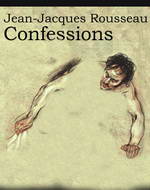 Confessions
Confessions
Considered to mark the emergence of a new literary form, the unvarnished autobiography, Confessions by Jean-Jacques Rousseau was first published in 1782, four years after his death. The philosopher and educationist whose political philosophy is credited with having inspired the French Revolution, Rousseau was a man of immense wit, talent and depth of thinking. His skill in art, music, literature and cooking along with his magnificent body of work in philosophy, politics, education and sociology have made him a legendary figure... | |